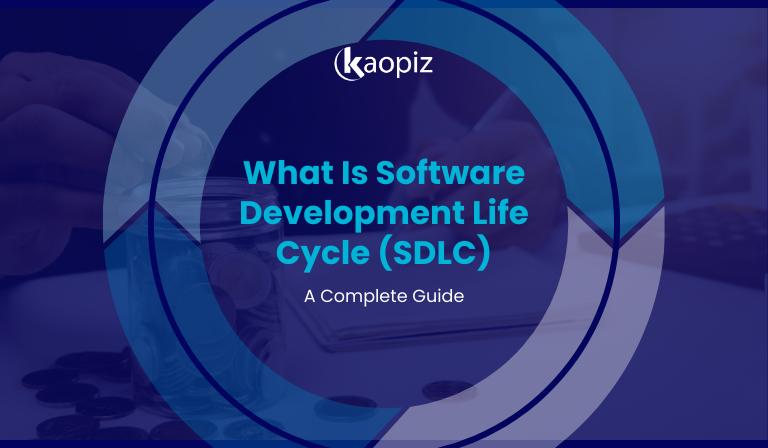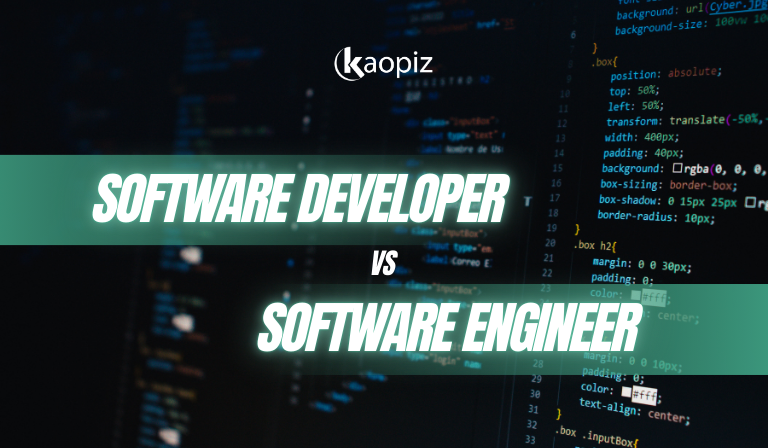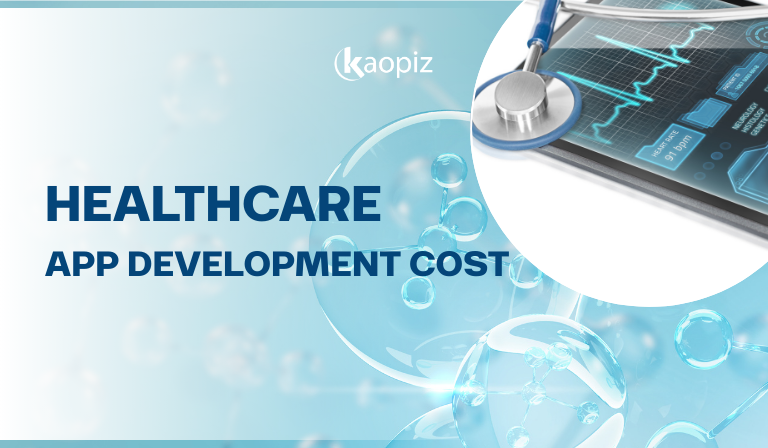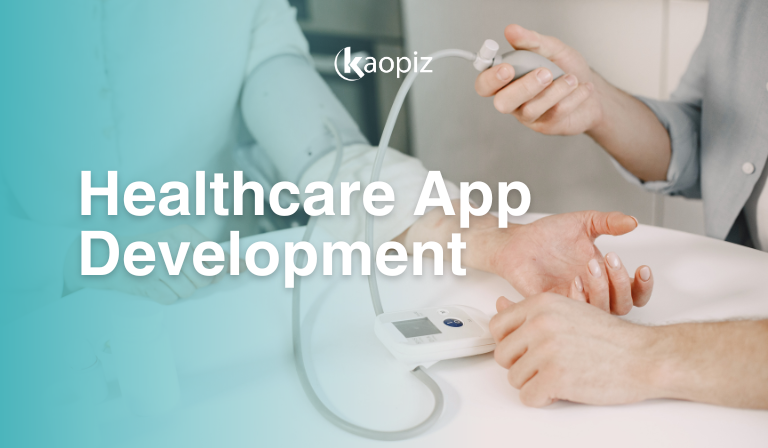Software Outsourcing Contracts: A Complete Guide for Singapore Businesses (2025)
With more Singapore businesses turning to offshore software development for cost savings and scalability, having a well-structured software outsourcing contract is more important than ever. A clear agreement not only protects your business legally but also ensures smooth collaboration, aligned expectations, and quality outcomes.
In this 2025 guide, we’ll cover what software outsourcing contract is, key types of it, the typical contract process for Singapore companies, and common pitfalls to avoid. Whether you’re outsourcing for the first time or revisiting your current contract model, this guide will help you navigate the process with confidence.
Table of Contents
- What Is a Software Outsourcing Contract?
- Key Offshore Development Contract Types
- Essential Clauses in Software Outsourcing Contracts
- The Offshore Development Contract Process for Singapore Businesses
- Common Challenges and How to Mitigate Them
- How to Choose the Right Offshore Development Partner in Singapore
- Why Choose Kaopiz as Your Offshore Development Partner?
- Conclusion
- FAQs
What Is a Software Outsourcing Contract?
A software outsourcing contract is a legally binding agreement between a client and an external service provider—often offshore or nearshore—to design, develop, maintain, or support software solutions. This document outlines the scope of work, project timelines, pricing models, intellectual property rights, confidentiality terms, and other critical legal and operational conditions.

With the global demand for digital solutions rising, IT outsourcing is becoming a strategic priority for businesses looking to scale faster and operate more efficiently. According to market projections, the global IT outsourcing market is expected to reach $588.38 billion by 2025. In Singapore alone, the market is forecasted to generate $5.19 billion in revenue in 2025, highlighting the growing reliance on outsourced software development services across sectors.
Key Offshore Development Contract Types
Before choosing a contract type, it’s essential to define how you want to work with your offshore business development partner. These are the three most common engagement models used by businesses in Singapore and globally:
| Engagement Model | Description |
|---|---|
| Project-Based Outsourcing | You delegate the entire project to the vendor—from planning to delivery—based on a clearly defined scope. |
| Dedicated Team Model | A full-time offshore team works as an extension of your in-house staff. You manage priorities; the vendor handles HR and infrastructure. |
| Staff Augmentation | Offshore developers are added to your internal team to fill skill or resource gaps. You manage their daily tasks. |
Once you’ve chosen the engagement model, the next step is selecting the right contract type. The contract governs how you pay, how the scope is managed, and who owns what. The three most common models—Fixed Price, Time and Materials (T&M), and Dedicated Team. Here’s a comparison table of contract types:
| Contract Type | Best For | Pros | Cons | Matched Engagement Model |
|---|---|---|---|---|
| Fixed Price | Short-term, well-defined projects (e.g., MVP, website) |
Predictable budget Low management overhead |
Limited flexibility Change requests may increase cost |
Project-Based Outsourcing |
| Time & Materials | Evolving or agile projects (e.g., product iteration) |
High flexibility Transparent billing Easy to adjust requirements |
Less budget predictability Needs close monitoring |
Staff Augmentation |
| Dedicated Team | Long-term development or enterprise systems |
Full control Scalable Long-term continuity |
Requires active management Fixed monthly cost regardless of workload |
Dedicated Team Model |
Each software development contract agreement offers distinct advantages depending on your project’s complexity, duration, and flexibility requirements. To help you make the right decision, we break down how each contract type works, along with its ideal use cases, benefits, and limitations.
Fixed Price Contracts
A Fixed Price Contract is a project-based agreement where the scope, timeline, and total cost are agreed upon upfront. This model is ideal for well-defined software development projects where requirements are stable and unlikely to change throughout the development process.
Under this contract for software development services, the vendor is responsible for delivering the agreed-upon features within the specified budget and deadline. It’s a low-risk option for clients who want predictable costs and minimal involvement during execution.
Best for:
- MVPs (Minimum Viable Products)
- Landing pages or websites
- Mobile or web apps with fixed specifications
- Pilot projects or POCs
Advantages:
- Clear budget from the start
- Defined delivery timeline
- Minimal day-to-day management required
Limitations:
- Inflexible to scope changes
- Extra costs for modifications or change requests
Time and Materials (T&M) Contracts
A Time and Materials (T&M) Contract is a flexible billing model where you pay for the actual time and resources spent on your project. This approach is ideal for software development projects with evolving requirements, where the scope isn’t fully defined upfront or may change during execution.
The development team works closely with you in iterative cycles, allowing for ongoing input, real-time feedback, and scope adjustments. It’s well-suited for Agile development and long-term collaborations.
Best for:
- Projects with dynamic or changing requirements
- Ongoing feature development or system enhancements
- Startups building new products iteratively
- Businesses using Agile or Scrum methodology
Advantages:
- High flexibility and adaptability
- Transparent billing based on actual work done
- Easy to incorporate feedback and scope changes
Limitations:
- Less cost predictability compared to a fixed price
- Requires active client involvement in planning, prioritization, and reviews
Dedicated Team/Labo Contracts
A Dedicated Team Contract—also known as the Labo Model—is a long-term outsourcing arrangement where you hire a full-time development team that works exclusively on your project. This team functions as an extension of your in-house staff, while the vendor handles recruitment, HR, infrastructure, and administrative tasks.
You retain full control over the team’s daily tasks, priorities, and roadmap, making it ideal for companies that require continuous development, fast scaling, or deep integration with internal processes.
Best for:
- Long-term product development or platform builds
- Enterprise system modernization or multi-phase rollouts
- Startups needing to scale quickly without hiring locally
- Businesses seeking team continuity and domain knowledge retention
Advantages:
- Full control over the team and development process
- High scalability—easily add or reduce team members as needed
- Strong collaboration and knowledge retention over time
Limitations:
- Requires active project management from the client side
- The monthly cost remains fixed regardless of the team workload
Essential Clauses in Software Outsourcing Contracts
To protect both parties and ensure smooth collaboration, every software development agreement should include a set of clearly defined legal and operational clauses. Below are the most essential elements to include in your outsourcing contract, especially when working with offshore partners.
Scope of Work
The Scope of Work (SOW) defines what the development team is expected to deliver. It outlines the project’s objectives, features, technical requirements, timelines, deliverables, and responsibilities of each party. This clause serves as the foundation for the entire engagement, helping to prevent misunderstandings and disputes.

A well-defined scope should include:
- Project goals and success criteria
- Detailed feature list or functional specifications
- Platforms and technologies to be used (e.g., iOS, Android, web, backend)
- Project phases or milestones
- Roles and responsibilities (client vs. vendor)
In offshore outsourcing, a clear scope is especially important due to language, time zone, and cultural differences. It helps ensure alignment from the start and minimizes the risk of scope creep or delays. For agile projects, the scope may remain high-level but should still define the overall product vision and roadmap.
Intellectual Property Rights
The Intellectual Property (IP) Rights clause is one of the most critical components of any software development contract. It defines who owns the software code, documentation, designs, and other deliverables created during the project.
In most cases, the client should retain full ownership of all intellectual property upon completion and payment. This ensures that you have the legal right to use, modify, sell, or license the software without restrictions.
When working with outsourcing development partners, especially across borders, it’s essential to:
- Clearly state that all IP created during the project belongs to the client
- Include provisions for source code access and transfer
- Define any third-party components or open-source libraries used
- Specify rights related to reusable code or frameworks developed by the vendor
Failing to clearly define IP ownership can lead to disputes, limited usage rights, or even legal complications, particularly if the vendor reuses or resells your code.
To protect your business, ensure this clause is specific, enforceable, and aligned with the intellectual property laws in both your country and the vendor’s jurisdiction.
Confidentiality and NDAs
When outsourcing software development—especially to offshore partners—protecting sensitive business information is essential. A Confidentiality clause and a properly executed Non-Disclosure Agreement (NDA) ensure that proprietary data, trade secrets, and intellectual property remain secure throughout and after the project.

This clause defines:
- What is considered “confidential information” (e.g., source code, business plans, customer data)
- How can the information be used by the vendor?
- The duration of confidentiality obligations (often 2–5 years post-contract)
- Exceptions, such as information already publicly known or legally required disclosures
For added protection, NDAs are often signed separately, either before or alongside the main contract. In offshore outsourcing, it’s also crucial to ensure the NDA is enforceable in the vendor’s jurisdiction.
Payment Terms
The Payment Terms clause outlines how and when the software development partner will be compensated. This section is essential for managing budgets, avoiding disputes, and ensuring that both parties are aligned with financial expectations.
Depending on the contract model (Fixed Price, Time & Materials, or Dedicated Team), payment terms can vary. Common approaches include:
- Milestone-based payments tied to specific deliverables or phases
- Monthly billing for dedicated teams or time-based engagements
- Upfront deposits followed by progress-based invoicing
A well-structured payment terms clause should include:
- The total project cost or hourly/monthly rates
- Payment schedule (e.g., 30/30/40 milestones or monthly cycles)
- Accepted payment methods and currency
- Late payment penalties or interest
- Tax responsibilities (especially in cross-border contracts)
Clear and enforceable payment terms help ensure a smooth financial relationship and prevent delays that could impact development timelines. Always confirm that invoicing and currency exchange requirements align with your local regulations and accounting practices.
Timelines and Milestones
The Timelines and Milestones clause sets expectations for project duration, key delivery phases, and deadlines. It acts as a roadmap for both the client and the development team, ensuring that progress is measurable and aligned with business objectives.

This clause typically includes:
- Project start and end dates
- Milestone breakdowns (e.g., UI/UX design, MVP release, final delivery)
- Deadlines for each phase
- Client responsibilities (e.g., approval timelines, content or asset delivery)
- Buffer periods to accommodate revisions or feedback
Milestones are often linked to payment schedules, progress reviews, or feature demos, making them a critical part of managing scope and accountability. In Agile development, milestones may be structured around sprints, with a focus on iterative deliverables.
Change Requests & Scope Creep Handling
In any software development project, change is inevitable. New requirements may arise, priorities may shift, or user feedback may prompt adjustments. That’s why your contract should include a clear Change Request and Scope Creep Handling clause to manage these changes in a structured, transparent way.
This clause defines:
- What constitutes a change request (e.g., new features, tech stack changes, UI revisions)
- The formal process for submitting and approving changes
- How changes impact cost, timeline, and resources
- Documentation and sign-off procedures
- How to handle disputes or unplanned work
Without a proper process in place, small changes can snowball, leading to scope creep, delays, and budget overruns. This is especially risky in fixed-price contracts, where vendors may cut corners to avoid extra costs.
Warranty and Maintenance Terms
The Warranty and Maintenance Terms clause outlines the support you can expect after the software has been delivered. It defines the vendor’s responsibility for fixing bugs, resolving issues, and ensuring the system continues to function as intended, often at no extra cost during a defined warranty period.

A typical warranty period ranges from 30 to 90 days post-deployment and covers:
- Bug fixes for issues that arise under normal usage
- Performance issues related to features delivered
- Minor adjustments or corrections that align with the original scope
Beyond the warranty phase, you may opt for a maintenance agreement—either on-demand or as a monthly retainer. This ensures continued support, updates, and improvements to your software.
Key elements to include:
- Warranty duration and coverage scope
- Support hours and response times (e.g., 24/7, business hours)
- Maintenance fees and service level agreements (SLAs)
- Exclusions (e.g., issues caused by third-party changes or client-side misuse)
Without clear warranty and maintenance terms, post-launch issues can lead to unexpected costs and downtime. This clause provides peace of mind and helps ensure the long-term reliability and performance of your software solution.
Termination Clauses
A well-defined Termination Clause is essential in offshore engineering contracts, as it outlines the conditions under which either party can end the agreement, voluntarily or due to a breach. This clause protects both the client and the vendor by ensuring a clear, fair exit process and minimizing legal or operational disruptions.
There are typically two types of termination:
- Termination for Convenience: Either party may end the contract with advance written notice (e.g., 30 days), regardless of reason.
- Termination for Cause: The agreement may be terminated immediately if one party fails to meet contractual obligations, such as missed deadlines, non-payment, or quality issues.
Key elements to include:
- Required notice period
- Final payment terms for work completed up to termination
- IP and deliverable handover obligations
- Post-termination confidentiality and support terms
- Any penalties or liabilities
Termination clauses ensure a smooth transition in case the partnership no longer works out, without putting your project, codebase, or budget at risk.
The Offshore Development Contract Process for Singapore Businesses
Outsourcing software development to an offshore partner—such as in Vietnam or other Southeast Asian markets—requires more than just choosing a vendor. To ensure long-term success, businesses in Singapore should follow a structured offshore development contract process that minimizes risk, enhances collaboration, and ensures alignment from day one.

Here’s a breakdown of each key phase of outsourcing contracts:
- Pre-contract phase: Define project requirements and sign an NDA to protect confidential information during vendor discussions.
- Contract negotiation: Agree on the contract type (Fixed Price, T&M, or Dedicated Team), scope, timelines, payment terms, IP rights, and legal jurisdiction.
- Signing & onboarding: Once the contract is signed, begin onboarding, introduce the team, set up tools, and align on project goals and workflows.
- Ongoing communication & governance: Establish regular meetings, clear communication channels, and project tracking to stay aligned and manage risks effectively.
- Evaluation and renewal/exit: Assess performance at key milestones. Decide whether to renew the partnership, scale the team, or exit with a proper handover.
Common Challenges and How to Mitigate Them
While offshore software development offers cost and scalability benefits, it also comes with challenges that Singapore businesses should proactively address. Below are some common issues of contract for development of a software—and how to mitigate them effectively:
| Challenge | Description | How to Mitigate |
|---|---|---|
| Time Zone and Cultural Differences | Delays or misunderstandings due to different working hours or cultural expectations. | Choose nearby countries (e.g., Vietnam), set overlapping hours, and establish shared communication practices. |
| Miscommunication on Scope | Vague or evolving requirements can lead to scope creep or project misalignment. | Use detailed documentation, wireframes, and approval checkpoints in both pre-contract and delivery stages. |
| IP Protection in Offshore Jurisdictions | Risk of source code reuse or IP theft in countries with different legal standards. | Include clear IP ownership clauses, NDAs, and ensure vendor compliance with Singapore and local IP laws. |
| Quality Assurance & Testing | Deliverables may not meet performance, usability, or stability expectations. | Set quality benchmarks, require thorough QA/testing processes, and define warranty/support terms after post-launch. |
| Legal Enforcement Across Borders | Legal disputes are harder to pursue when dealing with offshore vendors. | Use Singapore law in your jurisdiction clause, and partner with vendors that have strong legal track records. |
How to Choose the Right Offshore Development Partner in Singapore
Selecting the right offshore development partner is essential for long-term success. Beyond technical capabilities, you need a vendor who is legally reliable, communicative, and aligned with your business goals. Here are the key criteria to evaluate outsourcing contracts and partners:
- Legal track record & contract transparency: Choose a vendor with a clean legal history and experience working with Singapore-based clients. They should offer clear, detailed contracts that cover IP rights, payment terms, dispute resolution, and termination clauses, without hidden risks or vague language.
- Technical and domain expertise: Ensure the partner has proven experience with your required technology stack (e.g., Java, React, AWS) and relevant industry knowledge (e.g., fintech, retail, healthcare). This helps accelerate development and reduce onboarding time.
- References and case studies: Ask for client references and review past projects. A reputable partner will be able to showcase real-world success stories, including measurable outcomes, technologies used, and client feedback. Look for companies with repeat clients and long-term engagements.
- Clear SLAs and communication channels: Effective collaboration depends on strong communication. Your partner should offer defined SLAs for response times, bug resolution, and reporting frequency. Also, confirm preferred tools (Slack, Jira, Zoom) and escalation paths.
Why Choose Kaopiz as Your Offshore Development Partner?
With over a decade of experience in delivering high-quality software solutions to global clients, Kaopiz is a trusted IT outsourcing partner for Singapore businesses looking to scale efficiently and innovate faster.

Here’s why companies choose Kaopiz for a custom software development contract:
- Proven Track Record Across Industries
Kaopiz has successfully delivered 500+ software projects across fintech, retail, education, healthcare, logistics, and manufacturing, with a 98% client satisfaction rate. We understand both technical complexity and industry-specific needs.
- Scalable, Dedicated Teams
We provide flexible engagement models—from small teams for MVPs to full offshore development centers. Our dedicated team allows you to scale quickly with full-time engineers, project managers, and QA specialists working as an extension of your in-house team.
- Bilingual Communication & Cultural Fit
With English- and Japanese-speaking Bridge SEs and PMs, we ensure smooth, transparent communication throughout the project. We’ve built long-term partnerships with clients in Singapore, Japan, the US, and Europe.
- Strong Legal Compliance & IP Protection
As an ISO 27001-certified company, Kaopiz follows strict information security standards and ensures full IP transfer and legal transparency in all contracts, protecting your business at every stage.
- Full-Service Capabilities
From web/mobile app development to cloud migration, AI development, and system modernization, we offer end-to-end software solutions tailored to your goals and tech stack.
Whether you’re looking for a reliable offshore development partner to build your next product or scale your engineering capacity, Kaopiz combines talent, trust, and technical excellence, making us the ideal partner for long-term success.
Conclusion
Choosing the right software outsourcing contracts—and the right offshore development partner—is essential for successful collaboration, cost control, and long-term value. By understanding contract types, key clauses, and the outsourcing process, Singapore businesses can reduce risk and achieve better outcomes.
FAQs
Yes, it’s possible to switch contract models as your project evolves. For example, many clients start with a Fixed Price for MVP delivery and transition to a Dedicated Team or T&M model for ongoing development. Just ensure the transition terms are clearly documented and agreed upon by both parties.
Yes—offshore contracts can be enforceable in Singapore if they include a clear governing law and jurisdiction clause. Many Singapore companies specify Singapore law in their agreements to ensure protection under local regulations.
Include strong IP ownership clauses, sign an NDA, and ensure the vendor’s jurisdiction has enforceable IP laws. Partnering with a company like Kaopiz—which follows international standards and ISO 27001—adds an extra layer of protection.
Yes, it’s highly recommended. A lawyer familiar with technology and cross-border agreements can help ensure your contract covers all critical areas, such as IP, data protection, liability, and dispute resolution.
Kaopiz provides contract transparency, dedicated points of contact, and a clear onboarding process. We support clients through regular updates, change control management, and post-launch maintenance, ensuring your offshore engagement runs smoothly from start to finish.




















